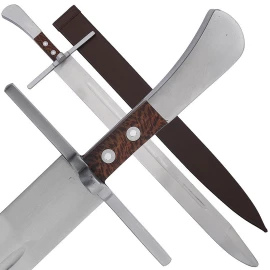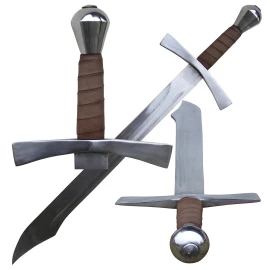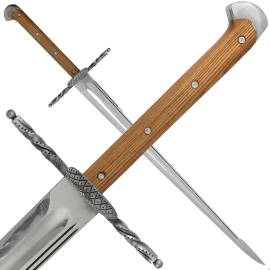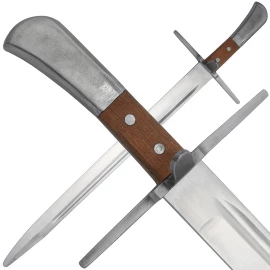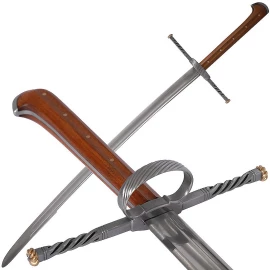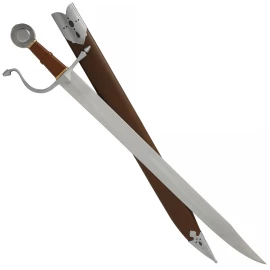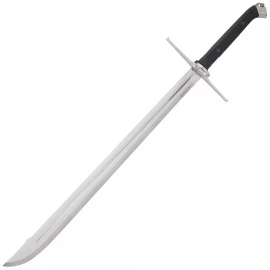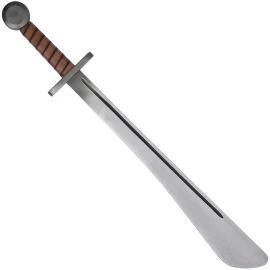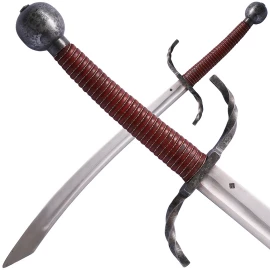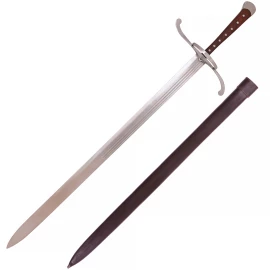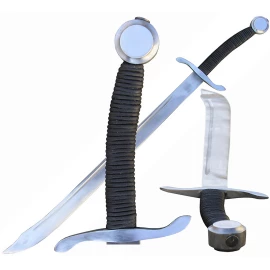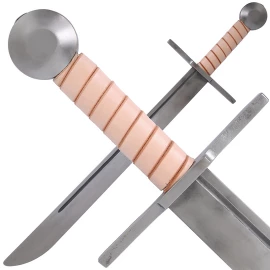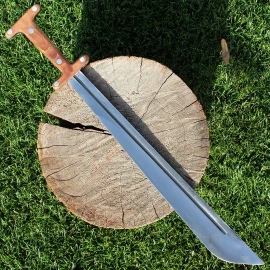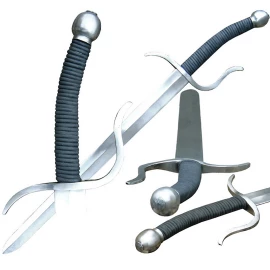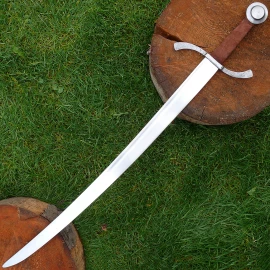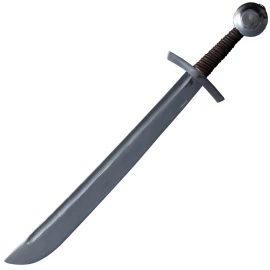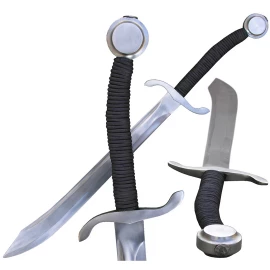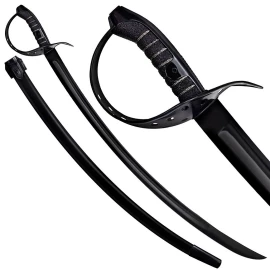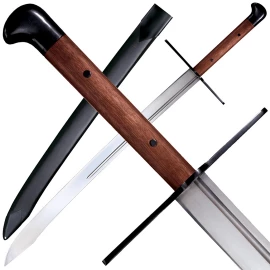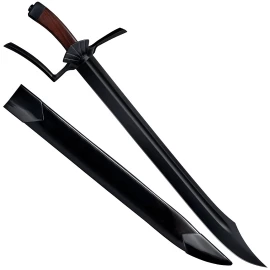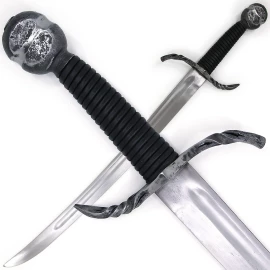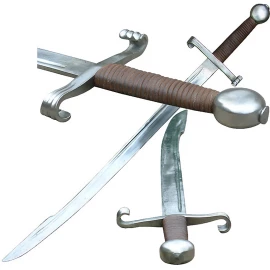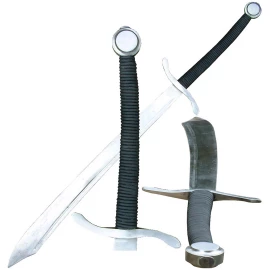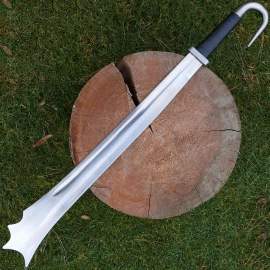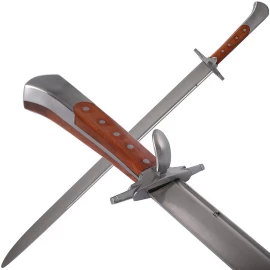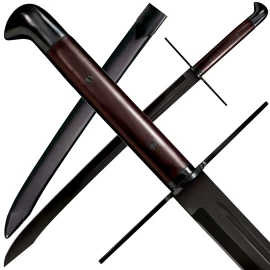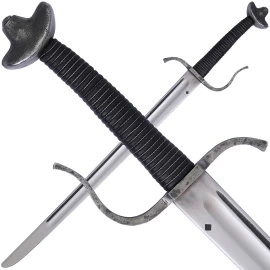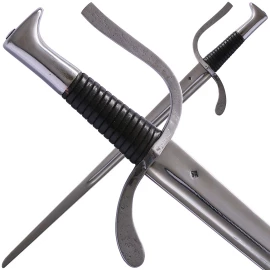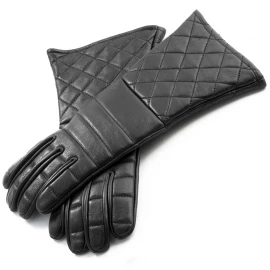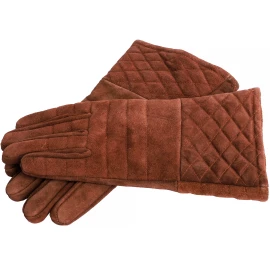Dusack Tessak Gaspar, Class B – 2nd half 16th cen.
Dusack Tessak Gaspar, Class B – 2nd half 16th cen.
This replica of a dussack from the second half of the 16th century is equipped with a wide-grind blade that makes the blade lighter. The handmade basket perfectly protects the fighter's hand. The handle is wrapped in smoothed black and brown cowhide and treated with a special moisture-repellent solution. The spherical pommel is screwed onto the continuous blade tang and forms the natural end of the handle. This Dussack with a blunt blade is suitable for stage combat and re-enactment. The Tessak can be crafted with a sharp blade as a collectible weapon not suitable for practical fencing for safety reasons.
The blade is made of spring steel 54SiCr6. The steel is oil-quenched and tempered to a hardness of 54-56 HRC degrees. Blades made of this steel are very tough (resistant to breakage) and flexible at the same time.
Source: Richard Holmes: History of Weapons from Antiquity to Today (2007) ISBN-13: 978-3831010868
- Total length 81.5 cm
- Blade length 64 cm
- Handle length 12 cm
- Blade width at the hilt 44.19 mm
- Blade width 10 cm off the blade point 33.12 mm
- Blade back thickness: 3.04 mm
- Thickness of the blade edge 0.39 mm
- The point of balance POB lies 5 cm from the basket
- Weight 1330 g
Due to the handcrafted nature of production, the above data may vary slightly from specimen to specimen.
The Dussack, also Dusack, Dussak or Tisacke (from Czech tesák), is a late medieval, one-handed, simple cutting and stabbing weapon with a curved edge. It probably originated in Europe in the 15th century. A dusack (from Czech tesák "cleaver; hunting sword") is a single-edged sword of the cutlass or sabre type, in use as a side arm in Germany and the Habsburg monarchy during the 16th to 17th centuries, as well as a practice weapon based on this weapon used in early modern German fencing. The Czech term entered German usage in the Hussite Wars, after the sidearm used by the Hussites. In the late 16th century, Dusägge could refer to a type of weapon combining a sabre blade with the hilt of a sidesword (the German Degen), also known as Säbel auf Teutsch gefasst ("sabre fitted in the German manner").
Please read our Directions for the use of bladed weapons
We are here for you


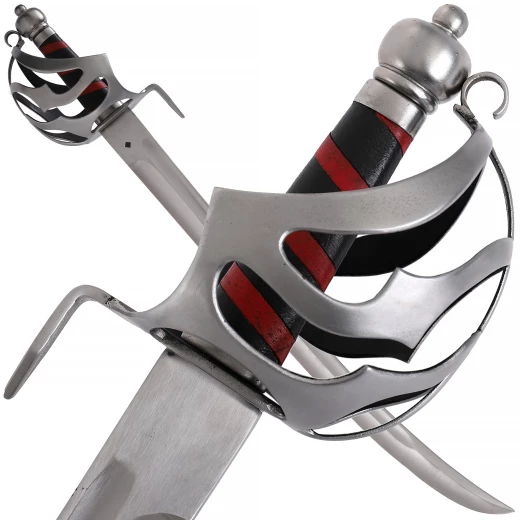
.2723751116.1709142196.JPG.webp)
.2723751116.1709142196.JPG.webp)
.2723751116.1709142196.JPG.webp)
.2723751116.1709142196.JPG.webp)
.2723751116.1709142196.JPG.webp)

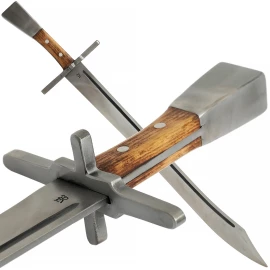
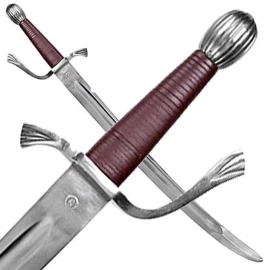
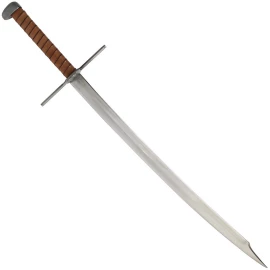
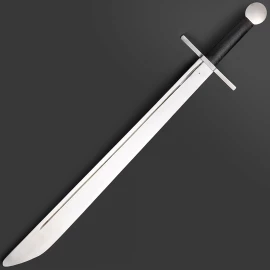

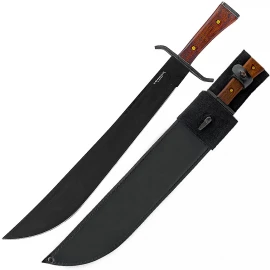
.2152382459.1712903949.jpg.webp)
